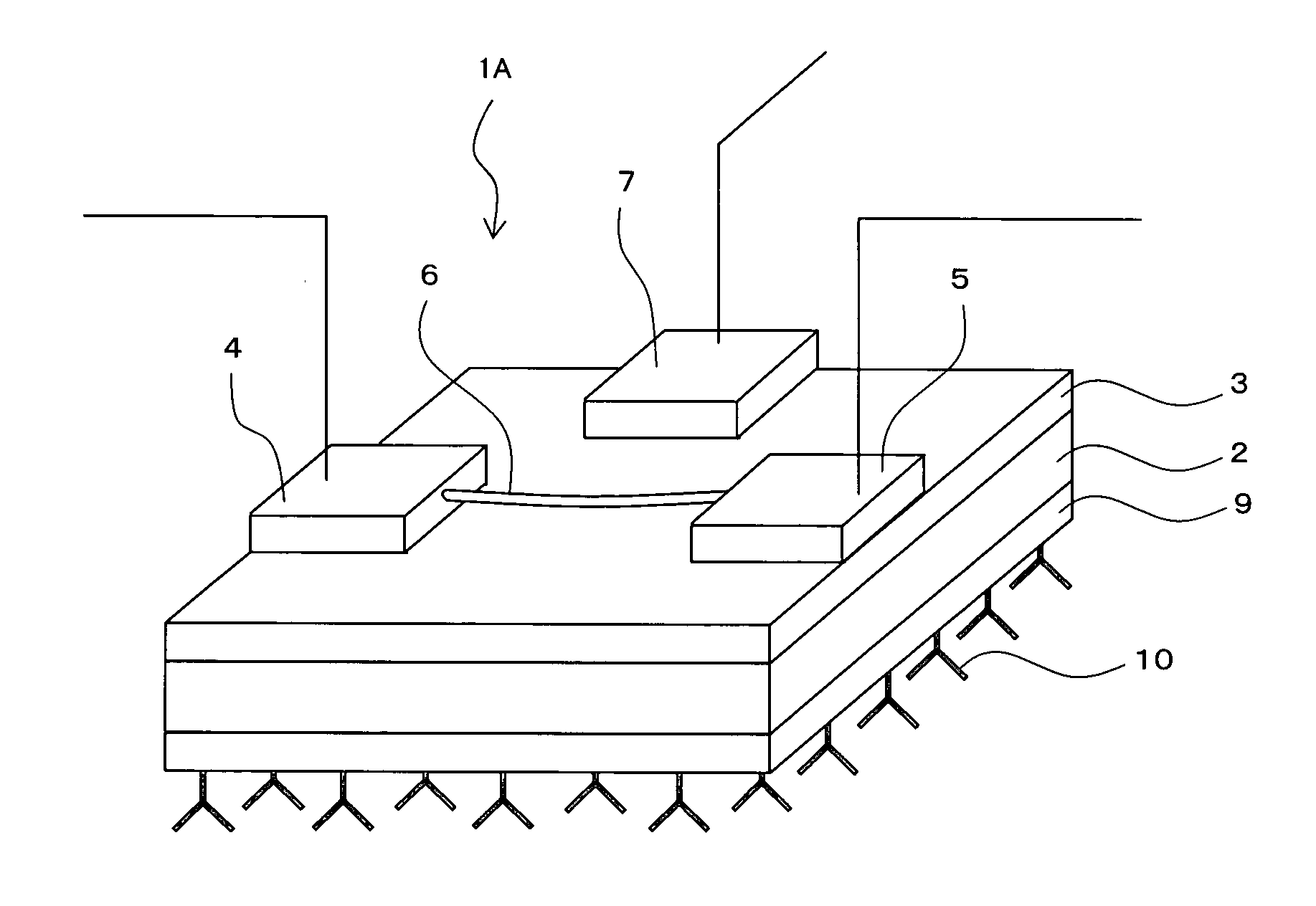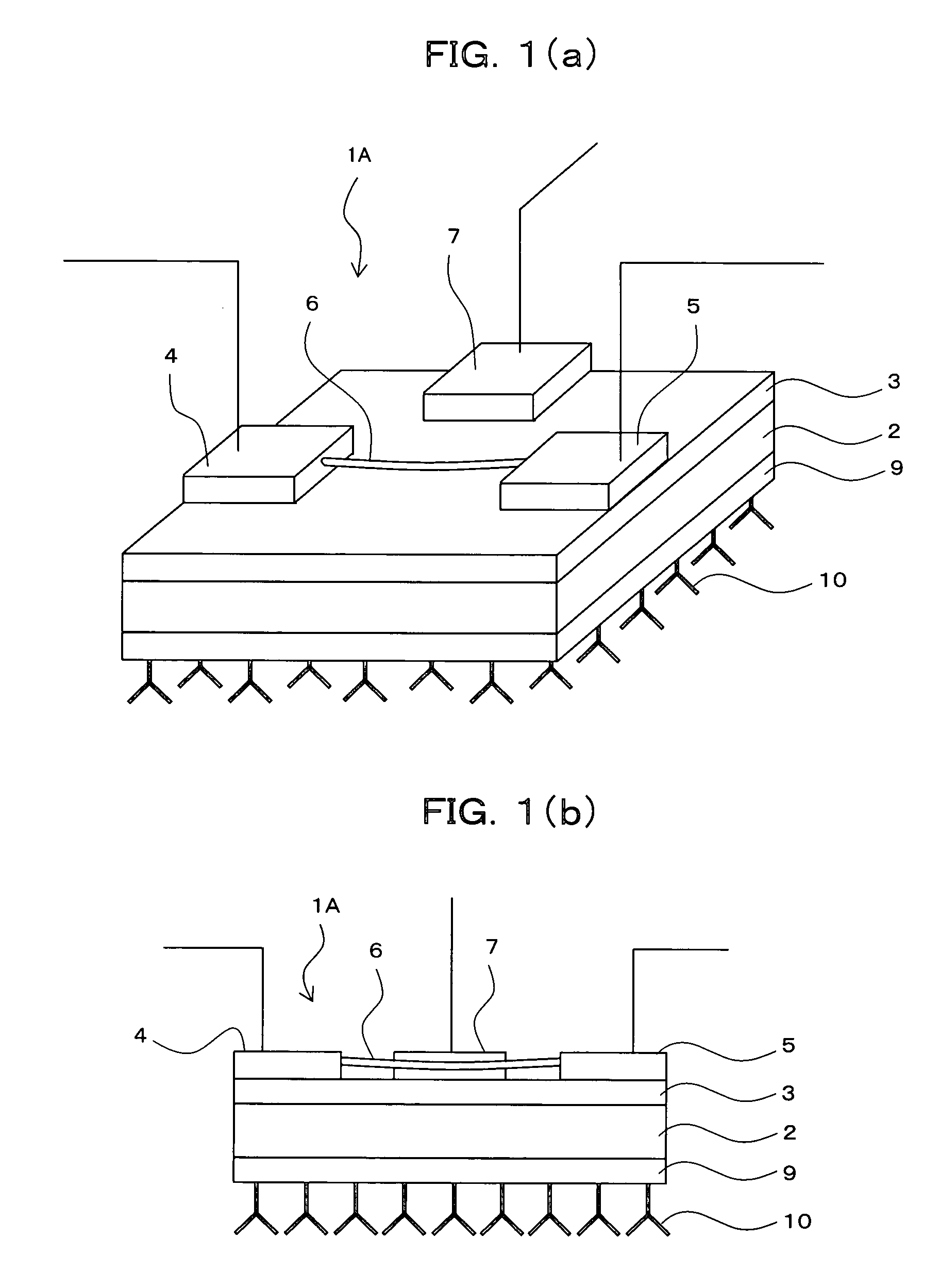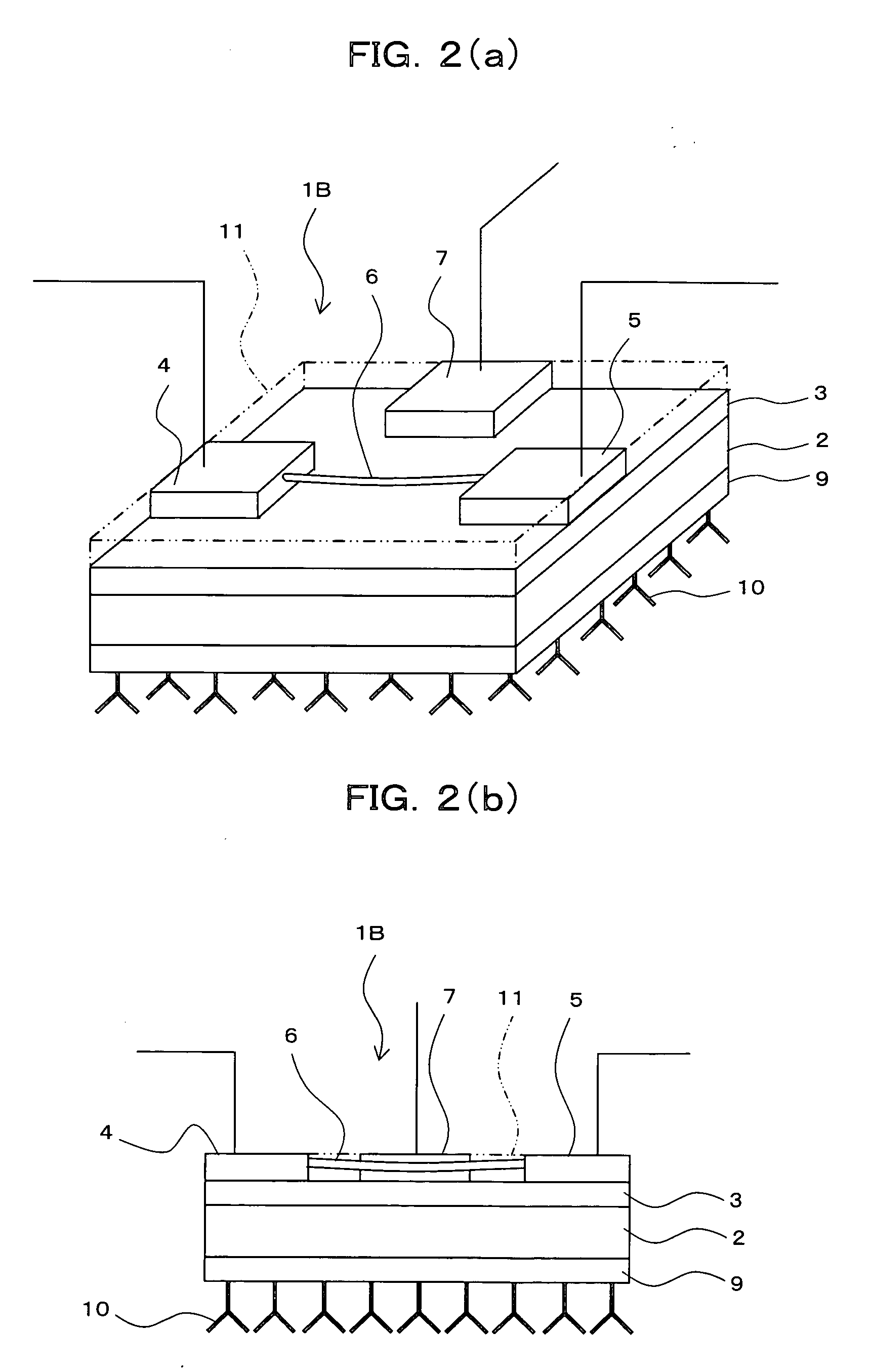Field-effect transistor, single-electron transistor and sensor using the same
a single-electron transistor and field-effect technology, applied in the field of field-effect transistors, single-electron transistors and sensors using the same, can solve problems that have not yet been realized, and achieve the effect of high detection sensitivity
- Summary
- Abstract
- Description
- Claims
- Application Information
AI Technical Summary
Benefits of technology
Problems solved by technology
Method used
Image
Examples
first embodiment
[0079]FIG. 1 (a) and FIG. 1 (b) illustrate sensors according to a first embodiment of the present invention. As shown in FIG. 1 (a), the substrate 2 of the transistor 1A is made of insulating material. On the upside (upper side in the FIGS.) of the entire substrate, the silicon oxide layer of insulating and low-permittivity material (hereinafter, called “low-permittivity layer,” if necessary) 3 is formed. On the right side of the low-permittivity layer 3, the source electrode 4 and the drain electrode 5, formed of gold, are placed, between which the channel 6 formed with a carbon nano tube is bridged.
[0080] The channel 6 is bridged between the source electrode 4 and the drain electrode 5 as if it were a bridge that connects the source electrode 4 and the drain electrode 5. Thereby it is apart from the low-permittivity layer 3 and the channel 6 is fixed to the transistor 1A at its two connecting points with the source electrode 4 and the drain electrode 5. The other portion of the c...
second embodiment
[0096]FIG. 2 (a) and FIG. 2 (b) illustrate sensors according to a second embodiment of the present invention. As shown in FIG. 2 (a), the transistor 1B constructing the sensor of the second embodiment of the present invention has similar structure to the transistor 1A described in the first embodiment.
[0097] The transistor 1B of the present embodiment further comprises the photosensitive resin layer of insulating and high-permittivity material (hereinafter, called “high-permittivity layer,” if necessary) 11 is formed on the upside of the entire low-permittivity layer 3. The high-permittivity layer 11 is formed to cover the whole channel 6, the lateral sides of the source electrode 4, the drain electrode 5 and the side gate 7 but not to cover the upsides (upper sides in FIGS.) of the source electrode 4, the drain electrode 5 and the side gate 7. The high-permittivity layer 11 is shown by chain double-dashed line in FIG. 2 (a) and FIG. 2 (b).
[0098] Because the sensor of the present ...
third embodiment
[0104]FIG. 3 (a) and FIG. 3 (b) illustrate sensors according to the third embodiment of the present invention. As shown in FIG. 3 (a), the transistor 1C constructing the sensors according to this embodiment, similar to the first embodiment, comprises the substrate 2 fabricated with insulating material, the insulating and low-permittivity layer 3, the source electrode 4 and the drain electrode 5. The source electrode 4 and the drain electrode 5 are formed with gold. The channel 6 formed with a carbon nano tube is brdged between the source electrode 4 and the drain electrode 5.
[0105] The back gate 12 for applying a gate voltage to the transistor 1C is formed on the back side of entire substrate 2. The back gate 12 is connected to a power supply, not shown in FIGS., which applies a voltage to the back gate 12. The voltage placed to the back gate 12 is able to be measured with a measuring instrument, not shown in FIGS.
[0106] The membrane fabricated with silicon oxide (insulating membr...
PUM
 Login to View More
Login to View More Abstract
Description
Claims
Application Information
 Login to View More
Login to View More - R&D
- Intellectual Property
- Life Sciences
- Materials
- Tech Scout
- Unparalleled Data Quality
- Higher Quality Content
- 60% Fewer Hallucinations
Browse by: Latest US Patents, China's latest patents, Technical Efficacy Thesaurus, Application Domain, Technology Topic, Popular Technical Reports.
© 2025 PatSnap. All rights reserved.Legal|Privacy policy|Modern Slavery Act Transparency Statement|Sitemap|About US| Contact US: help@patsnap.com



